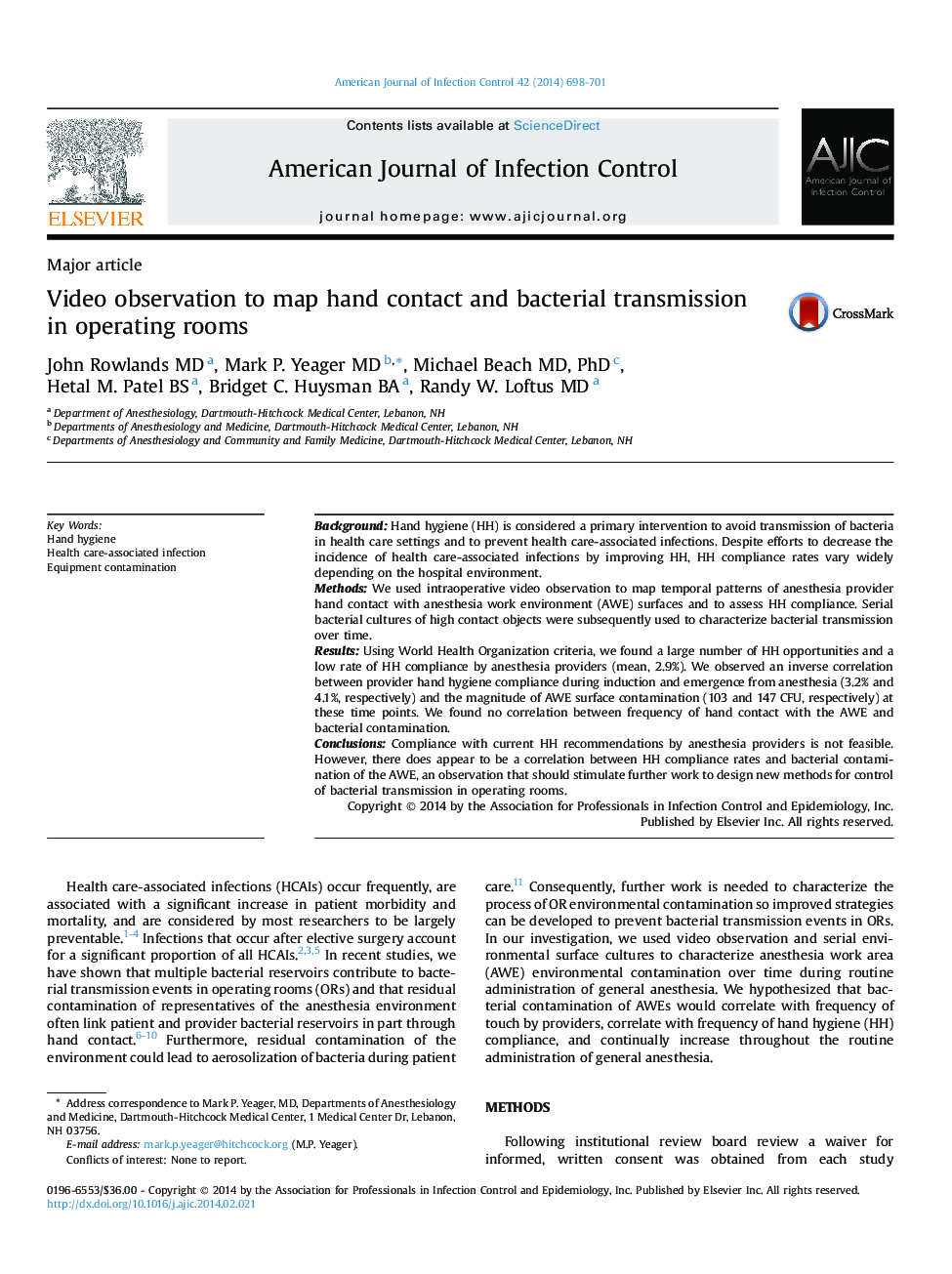| کد مقاله | کد نشریه | سال انتشار | مقاله انگلیسی | نسخه تمام متن |
|---|---|---|---|---|
| 2636957 | 1563484 | 2014 | 4 صفحه PDF | دانلود رایگان |
BackgroundHand hygiene (HH) is considered a primary intervention to avoid transmission of bacteria in health care settings and to prevent health care-associated infections. Despite efforts to decrease the incidence of health care-associated infections by improving HH, HH compliance rates vary widely depending on the hospital environment.MethodsWe used intraoperative video observation to map temporal patterns of anesthesia provider hand contact with anesthesia work environment (AWE) surfaces and to assess HH compliance. Serial bacterial cultures of high contact objects were subsequently used to characterize bacterial transmission over time.ResultsUsing World Health Organization criteria, we found a large number of HH opportunities and a low rate of HH compliance by anesthesia providers (mean, 2.9%). We observed an inverse correlation between provider hand hygiene compliance during induction and emergence from anesthesia (3.2% and 4.1%, respectively) and the magnitude of AWE surface contamination (103 and 147 CFU, respectively) at these time points. We found no correlation between frequency of hand contact with the AWE and bacterial contamination.ConclusionsCompliance with current HH recommendations by anesthesia providers is not feasible. However, there does appear to be a correlation between HH compliance rates and bacterial contamination of the AWE, an observation that should stimulate further work to design new methods for control of bacterial transmission in operating rooms.
Journal: American Journal of Infection Control - Volume 42, Issue 7, July 2014, Pages 698–701
